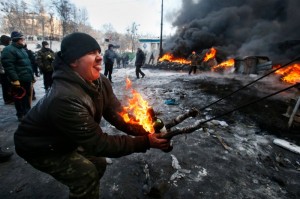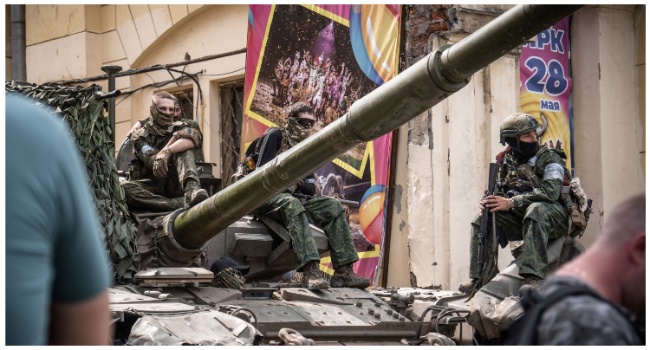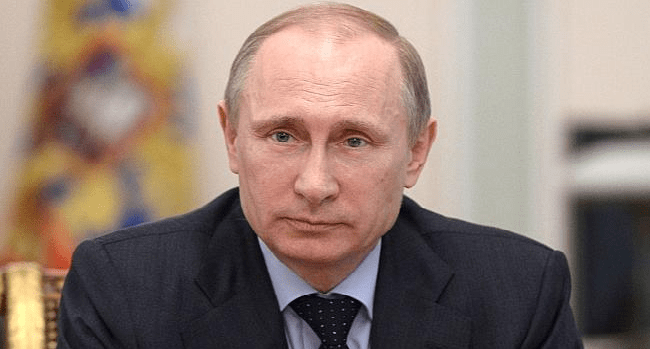
The country is sliding further towards war, with supporters of Russia and of a united Ukraine accusing each other of tearing the country apart.
Tuesday morning was quieter than past days in eastern and southern Ukraine, but the deadliest week since the separatist uprising began has transformed the conflict, hardening positions and leaving little room for peace.
In Kramatorsk, a separatist-held town in the east that saw an advance by Ukrainian troops at the weekend, the coffin of 21-year-old nurse Yulia Izotova was carried through streets stilled by barricades of tires and tree trunks on Monday. Scattered red carnations traced the route.
At the Holy Trinity Church, seven priests led mourners in prayer for a woman killed by large caliber bullets, which the townsfolk believe were fired by Ukrainian troops.
“They shoot at us. Why? Because we don’t want to live with fascists?” asked 58-year-old passport photographer Sergei Fominsky, standing with his wife among the mourners. “We’re not slaves. We kneel to no one.”
In Odessa, a previously peaceful, multi-ethnic Black Sea port where more than 40 people were killed on Friday in the worst day of violence since a February revolt toppled Ukraine’s pro-Russian president, pall-bearers carried Andrey Biryukov’s open casket from a van to the street corner where he was shot.
A pro-Ukrainian activist, Biryukov, 35, was killed during a day that began with hundreds of pro-Russian sympathizers armed with axes, chains and guns attacking a Ukrainian march, and ended later that night with the pro-Russians barricaded inside a building that was set on fire, killing dozens.
A small crowd of about 50 people stood around the body, covering it with carnations and roses. A Ukrainian flag fluttered in the wind, and a patriotic song about dead heroes was played from a sound system.
Relatives wept and a young woman fell on her knees crying loudly. The corner where the man died was decorated with flowers and small Ukrainian flags.
“The government has failed to protect its own people. The police have failed miserably,” said Nikita, a grizzled 56-year-old with a Ukrainian yellow and blue arm-band.
Sergei, in his 40s, who also came to mourn, said violence “was imported to Odessa”.
“We were proud of Odessa as a unique place where people used to live in peace, regardless of their beliefs and religion and race,” he said. “Now this is all gone.”
The surge in violence has changed the tone of international diplomacy, with even cautious European states speaking increasingly of the likelihood of war in a country of around 45 million people the size of France.
“The bloody pictures from Odessa have shown us that we are just a few steps away from a military confrontation,” German Foreign Minister Frank-Walter Steinmeier said in interviews published in four European newspapers.
The next few days could prove decisive: separatists in the eastern Donbass region say they will hold a referendum on secession on Sunday May 11, similar to the one that preceded Russia’s annexation of Crimea.
Two days earlier, Friday May 9, is the annual Victory Day holiday celebrating the Soviet Union’s victory over Nazi Germany. Moscow has been openly comparing the government in Kiev to the Nazis, and Ukrainian officials say they are worried that the day could provoke violence. In Moscow, there will be a massive parade of military hardware through Red Square, a Soviet-era tradition revived by President Vladimir Putin.



